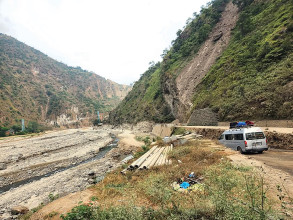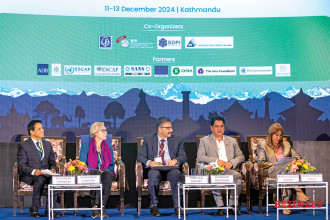
Gender Lens Investing (GLI) integrates gender considerations throughout the investment process and its potential influence on financial performance and social impact, rapidly evolving from a niche strategy to a mainstream investment approach.
GLI delves deeper than traditional financial analysis offering a multifaceted assessment by taking into account the representation of women in leadership positions, board composition, and overall workforce demographics as well as how a company’s offerings empower women, either as customers benefiting from solutions designed to address their needs or as employees working within the company itself. On top of this GLI assesses a company’s commitment to equal pay for equal work, the availability of parental leave for both genders, and the overall workplace culture that fosters gender inclusion and combats bias.
Companies demonstrating a commitment to gender equality can attract and retain top female talent, fostering a more innovative and diverse workforce. Additionally, such a commitment resonates with a growing segment of socially conscious consumers who are increasingly directing their purchasing power towards companies that align with their values.
In essence, GLI presents a compelling strategy for investors seeking to generate competitive financial returns while simultaneously driving positive social change by promoting gender equality. It’s a powerful tool for harnessing the untapped potential of women in business and fostering a more inclusive and prosperous world.
CHALLENGES
Data Constraints
GLI thrives on robust data to assess a company’s commitment to gender equality. This includes metrics like the number of women in leadership positions, the gender breakdown of the workforce, and the impact a company’s products or services have on women. Unfortunately, Nepal’s financial landscape suffers from a scarcity of such data. This makes it challenging for potential investors to conduct in-depth GLI analysis and identify companies that align with their impact goals. Even when data is available, the lack of standardised collection and reporting methods creates inconsistencies, making it difficult to draw meaningful conclusions for investment decisions.
To bridge this gap, collaboration is key. Government agencies, financial institutions, and corporations need to work together to establish standardised data collection and reporting practices. This will ensure the availability of comprehensive and reliable gender-specific data, which is the bedrock of effective GLI.
Room for Growth
Nepal’s GLI ecosystem is still maturing. Dedicated GLI funds and investment products specifically targeting companies with strong gender equality practices are only beginning to emerge. This restricts investment options for those seeking to incorporate a gender lens into their portfolios. Furthermore, limited investor awareness presents another hurdle. While interest is growing, widespread knowledge and understanding of GLI principles amongst investors in Nepal is lacking. This can be a significant barrier to broader adoption of the strategy.
To address this, educational initiatives are crucial. Workshops, seminars and knowledge-sharing platforms can equip investors with the tools and understanding to integrate GLI into their investment decisions. By fostering a more informed investor pool, Nepal can cultivate a more robust ecosystem that supports the growth of GLI.
Sole Focus on Large Businesses
GLI efforts often focus on larger, more established companies. This overlooks the significant role that small and medium enterprises (SMEs) play in Nepal’s economy. A substantial portion of these SMEs are helmed by women. However, these women-led ventures often lack the resources and support systems needed to thrive.
Tailoring investment strategies and support systems to address the specific needs of women-led SMEs is essential for maximising GLI’s impact. This could involve providing access to microloans, mentorship programmes, and business development resources geared towards women entrepreneurs. By empowering women-led SMEs, GLI can not only promote gender equality but also unlock a wellspring of economic potential in Nepal.
Persistent Gender Bias
Deep-rooted societal gender biases can still influence investment decisions, even among those who are open to GLI principles. Unconscious bias can lead investors to overlook promising women-led ventures or underestimate their potential. Promoting gender diversity within investment firms and fostering a culture of awareness around unconscious bias can help mitigate this challenge.
NOTABLE GLI INITIATIVES TAKEN IN NEPAL
In 2020, Mennonite Economic Development Associates (MEDA) partnered with Samriddhi Foundation to conduct workshops on ‘Leveraging Blended Finance & Gender Lens Investing for Economic Growth’. These workshops aimed to equip participants with the knowledge and tools to utilise GLI for achieving economic goals in Nepal.
‘Empowered Women, Prosperous Nepal Programme’ was a joint initiative by the Government of Nepal, European Union and the United Nations to promote gender equality and women’s empowerment. The programme recognises the importance of financial inclusion and economic opportunities for women, aligning with GLI principles.
The ‘Powered by Women’ was an initiative by the International Finance Corporation aimed to help hydropower companies in Nepal recognise the benefits of gender diversity and equality. This can be seen as an initial step towards integrating a gender lens into investment decisions within the Nepali private sector.
‘Gender Financing Project’ by Publish What You Fund aims to improve the publication of gender-related financial and programmatic data in Nepal. Increased data transparency is crucial for effective GLI implementation. The report ‘suggests that significant progress can be made in terms of government and donors improving the identification and quality of national and international gender spending. In addition, there is significant potential for improved engagement by funders, especially with Nepal-based NGOs, WROs, and feminist networks working on gender equality in Nepal, to meet these key gender equality stakeholders’ data needs and to improve their capacity to collect, manage, analyse and publish gender financing data’.
‘Dolma Impact Fund II’ is a private equity fund that qualifies for the 2X Challenge, which is an initiative of 20 Development Finance Institutions and Multilateral Development Banks to collectively mobilise $15 billion in commitments that provide women in developing country markets with improved access to leadership opportunities, quality employment, finance, enterprise support and products and services that enhance economic participation and access. Dolma II invests in sectors like renewable energy and healthcare, with a focus on companies that promote gender equality through leadership opportunities, female employment, or products that benefit women.
LESSONS FROM SIMILAR ECONOMIES
Diverse Talent Pool: Companies with a strong focus on gender equality attract a wider pool of talent, leading to a more diverse and innovative workforce. This can be a significant advantage in today’s competitive global market. The ‘Diversity Matters Even More’ report by McKinsey & Company suggests that companies with greater gender diversity are more likely to outperform financially. When women are included in decision-making processes, companies benefit from a broader range of perspectives and experiences, leading to more creative solutions and a stronger competitive edge.
Example: Mongolia - Mongolia shares similarities with Nepal, being a developing nation with a patriarchal society. However, Mongolia has a burgeoning private sector and a growing number of women-led businesses. Since the collapse of communism, Mongolia has made significant strides towards gender equality. This has resulted in a surge of women entrepreneurs launching innovative businesses across various sectors. The Mongolian government has actively supported these ventures by supporting initiatives like the ‘Mongolia Women Entrepreneur Growth Fund’, by the United Nations Economic and Social Commission for Asia and the Pacific (ESCAP) in partnership with the International Women’s Federation of Commerce and Industry, which provides access to vital financial resources, training programmes, and mentorship opportunities to help them overcome challenges and achieve sustainable growth.
Reduced Social Unrest: Gender inequality can be a source of social tension and instability. By promoting gender equality, GLI can contribute to a more peaceful and prosperous society. Limited economic opportunities for women can lead to social unrest and political instability. When women are empowered economically, they gain a stronger voice in society, and communities become more peaceful and cohesive.
Example: Liberia - Women of Liberia Mass Action for Peace, a movement started by women, played a major role in bringing about an end to its nation’s 14-year civil war in 2003. The election of Ellen Johnson Sirleaf as Africa’s first female president marked a turning point. Liberia has since seen a significant decrease in violence and political instability. While complex factors are at play, scholars point to increased female leadership as a contributing factor to the country’s improved social climate. GLI can play a role in supporting women’s political participation by funding initiatives that promote women’s leadership training and civic engagement.
Socially Responsible Investment: As global investors become increasingly focused on Environmental, Social and Governance (ESG) factors, Nepal’s commitment to gender equality through GLI can position the country as an attractive destination for socially responsible investment. Investors seeking to align their financial goals with positive social impact will be drawn to Nepal’s dedication to gender equality as demonstrated through its embrace of GLI principles. This can lead to an influx of foreign capital, which can further fuel economic growth and development.
Example: CDC Group in South Asia - The British International Investment, (formerly CDC Group plc, Commonwealth Development Corporation, and Colonial Development Corporation), the UK’s development finance institution, has actively invested in projects that promote gender equality in South Asia. They recognise that gender equality is not just a social good, but also a smart business decision that can lead to stronger economic growth and poverty reduction.
Example: IFC around the world: The International Finance Corporation issued social bonds in various developing countries to raise capital for projects that promote women’s economic participation. These bonds attracted investors seeking both financial returns and social impact. Their publication ‘Bonds to Bridge the Gender Gap: A Practitioner’s Guide to Using Sustainable Debt for Gender Equality’ hopes to ‘encourage stakeholders across capital markets to go beyond business as usual in addressing gender inequalities and unlock the funding opportunities that sustainable instruments present’.
Boosting Productivity and Growth: GLI can fuel economic growth by unlocking the potential of a currently underutilised resource; women. Studies by the World Bank show that closing the gender gap in labor force participation can increase a country’s GDP by as much as 20%. Nepal can achieve this by investing in sectors with high female representation, or by supporting companies that implement policies promoting equal pay, parental leave and skills development opportunities for women. This creates a more productive and dynamic workforce, fostering innovation and propelling the economy forward.
Example: Rwanda’s GDP growth - Rwanda, a nation recovering from genocide, provides a compelling example. Through targeted policies and investments in education and healthcare, Rwanda has achieved impressive progress in closing its gender gap. Rwanda is the first country in the world with a female majority in parliament with 61.3% in the Chamber of Deputies. This has demonstrably contributed to Rwanda’s economic transformation, with the country experiencing a sustained period of GDP growth, with 8.2% annual change in 2022.
Example: Costa Rica’s Rise in Tech - Costa Rica, a nation traditionally known for agriculture and tourism, has seen a remarkable rise in its tech sector in recent years. This is due in part to a deliberate effort to attract and retain female talent in the tech industry. The government, along with private companies, has implemented initiatives like coding bootcamps specifically designed for women. The national policy for promoting equality between men and women for the development, employment and appropriation of Science, Technology, Telecommunications, and Innovation, for the period 2018 – 2027 defines key aspects for the coordination of efforts, both public and private, for the reduction of the gap of women’s participation in STEM fields. Such policies are an integral part in the rise in Costa Rica’s tech sector.
Investing in Families: When women have access to financial resources and economic opportunities, they tend to reinvest a larger portion of their income back into their families. This leads to improved health outcomes, education for children, and a better overall standard of living. GLI funds can target companies that provide women with access to capital, training and mentorship opportunities. Additionally, by supporting businesses that offer flexible work arrangements or childcare facilities, GLI can help women balance work and family life, contributing to a more sustainable and equitable distribution of household responsibilities. This empowers not just women, but entire families and communities.
Example: The Grameen Bank’s Effect in Bangladesh - The Grameen Bank, founded by Muhammad Yunus in Bangladesh, pioneered microfinance lending specifically to women. This investment in the next generation is crucial for breaking the cycle of poverty and fostering long-term economic growth. The Grameen Bank’s success story demonstrates the far-reaching positive impact that GLI can have on families and communities.
Example: Milaap in India: This crowdfunding platform in India targets women entrepreneurs in rural areas. Milaap does not lend directly to the beneficiary. They facilitate loans through micro-finance institutions operating in the beneficiary’s area. These institutions identify needs, manage loans under statutory guidelines, and disburse funds. They focus on financial literacy training, and mentorship specifically designed for women’s businesses. The results are always increased income, job creation and greater economic empowerment for women.
CONCLUSIONS
Taking inspiration from the above examples, to implement Gender Lens Investing in Nepal the government should prioritise developing a national GLI strategy outlining clear goals and targets. This strategy should prioritise sectors with high potential for gender equality impact, such as agriculture, renewable energy and healthcare. Another manner of incentivising such reforms, they can introduce tax breaks or subsidies for businesses that implement GLI practices. These incentives can encourage wider adoption of GLI principles and attract more capital towards gender-equitable businesses. Mandating data collection by companies to track progress, would make it easier to measure the impact of GLI initiatives and identify areas for improvement. Standardising data collection will also allow for better comparison and benchmarking between companies.
For purposes of capacity-building, it is imperative to organise workshops and training programmes for government officials, investors and entrepreneurs on GLI. These programmes should cover the entire GLI spectrum, from understanding the rationale behind GLI to developing and implementing GLI strategies. By partnering with NGOs and development agencies that have expertise in gender equality and finance to create educational resources can lead to the development of high-quality educational materials that are accessible to a wider audience.
It is also important to launch public awareness campaigns highlighting the benefits of GLI for economic growth and gender equality. These campaigns can use various communication channels, such as traditional media, social media and community outreach programmes, to reach a diverse audience. By recognising companies that excel in GLI practices can inspire others to follow suit. This can be achieved through awards programmes or industry recognition initiatives.
The private sector also needs to integrate gender considerations throughout the investment process, from deal selection to monitoring and evaluation. This means considering factors like the potential impact of the investment on women’s employment, leadership opportunities and access to resources. It is also necessary to partner with other investors to co-finance GLI projects. Collaboration can help spread the risk and attract larger investments towards GLI initiatives. This can be particularly beneficial for larger projects that require significant capital.
These measures have to come with a change to internal practices to focus on promoting gender diversity within companies, including boards and leadership positions as gender-balanced leadership teams are more likely to understand and prioritise gender equality considerations. Implementing workplace policies that support work-life balance for all employees like flexible working arrangements, parental leave policies and affordable childcare options can help remove barriers for women’s participation in the workforce and enable them to reach their full potential.
Establishing a multi-stakeholder forum involving the government, private sector and civil society organisations to foster collaboration and knowledge sharing on GLI can serve as a platform for discussing challenges, sharing best practices and developing joint initiatives and encouraging public-private partnerships to develop and implement GLI initiatives. By combining government resources, private sector expertise, and civil society experience, these partnerships can create a more robust ecosystem for GLI in Nepal.
By working together and implementing these recommendations, the Nepali government and private sector can create a more enabling environment for GLI, leading to a more inclusive and prosperous economy that benefits all Nepalis.






